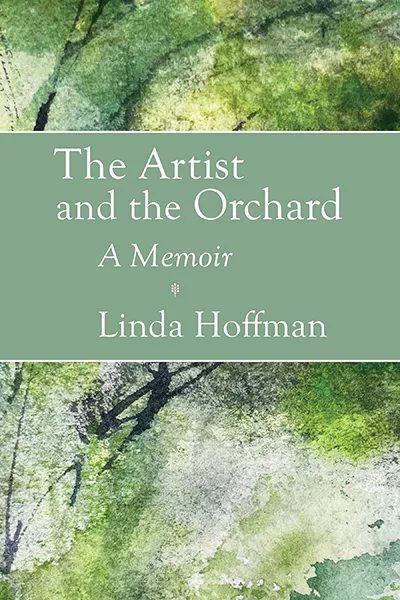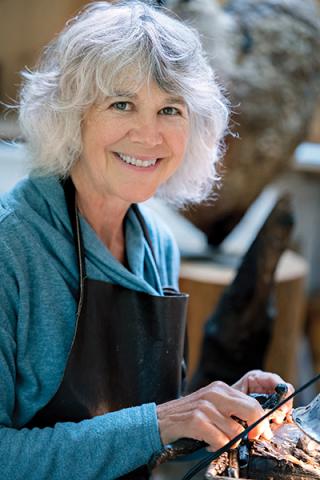The Artist and the Orchard
How Linda Weiner Hoffman ’78 brought an abandoned apple orchard back to life.
In 2001, Linda Weiner Hoffman ’78 bought a small, run-down farm in Massachusetts after leaving a long marriage. Over time, she brought the farm’s abandoned apple orchard back to life. In her new memoir, The Artist and the Orchard (Loom Press, 2021), Hoffman recounts that journey, weaving in stories about her marriage to Paul Matisse (grandson of the French painter); a cancer diagnosis; being a Zen Buddhist; and the late-in-life educational
journey of her mother, Annette B. Weiner, Ph.D. ’74. Here is how the book begins:
I was alone in an abandoned orchard and didn’t know the first thing about growing apples.
Holding a half-sheet of paper, I read the names of varieties by row—McIntosh, Cortland, Red Delicious, Blushing Golden, and Golden Delicious. A few small green orbs dangled here and there, but I couldn’t tell a McIntosh from a Cortland. Thorns on brambles snagged my ankles while poison ivy and bittersweet vines spiraled around tree trunks. This was not what I expected in a New England apple orchard in July. The enormity of my new reality hit me.
On a bright March afternoon in 2001, I’d visited A & M Orchards in Harvard, a rural town in eastern Massachusetts about forty-five minutes west of Boston. The real estate listing said: Farmhouse with five bedrooms, a detached barn/garage, apple orchard, and chicken coop. I wasn’t looking for a way to get back to the earth or grow my own food. I was leaving a long marriage and looking for a home for myself and my three children. I would never have considered a small farm, but a good friend had urged me to check out the property. She had grown up here and loved this old homestead. Her parents had sold it to the present owners.
I called my friend Roger, a local realtor. He questioned whether the property was a good match, but he said he'd meet me there. I arrived first and ignored the in-need-of-paint clapboard farmhouse. Instead, I walked down the driveway towards the pond and a towering elm tree. … The elm had been planted alongside a ten-foot-high stone dam. Water flowed from the large pond into a smaller one below. The sound of falling water reminded me of ancient Chinese Buddhist hermits doing ablutions under cold mountain falls. ...
Roger and I entered the house. The front door opened into a spacious living room where a brick fireplace covered one wall. A brown sofa, a dark upholstered chair, and a wooden desk floated like atolls on the hardwood floor. Adrift among them, I followed Roger down three steps into the kitchen where molasses-colored pine boards covered the walls and ceiling. In place of drawers and cabinets, open shelves held plates, bowls, and glasses. Along one wall, heavy pots for making jam and stocks sat on the floor. Above an old-fashioned cast-iron cookstove a patchwork of blackened pans hung, their undersides crusty with use. On my search for a new home, I had already toured several houses whose kitchens boasted granite counters and sleek appliances. This farmhouse kitchen had a different feel—its rustic patina was more my style.
Roger and I continued our tour upstairs and peered into simple bedrooms. … The master bath had 1960s avocado-colored fixtures, a hue that made me want to look away, but my right hand reached towards the sink’s hot water faucet and I thought, If this house has hot water, it will be fine.
Published on: 02/24/2022

